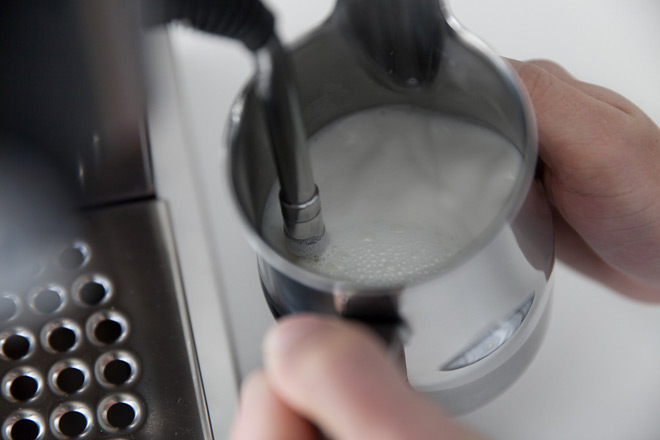How to make a better flat white than Starbucks

Like a hasty dive into a pool, the flat white can sometimes turn out to be more of a belly flop. You need to know what you’re doing. So let’s work through these coffee basics.
What is a flat white?
Not a cappuccino. The distinguishing factor? Cappuccinos have light foam and often have hot water added. Flat whites are pure espresso (either single or double shots) blended only with velvety microfoam, which is also what allows for all this beautiful latte art.
This delectable coffee beverage is said to originate from Australia and New Zealand coffee drinkers desire to create a slightly more jazzed up version of the coffee they were used to drinking at home. There are a myriad of definitions and stories on the web, but we quite like this one by The Coffee Hunter. Be it as it may, the flat white is no doubt an honest mish-mash of baristas travelling the world and trying to interpret the local coffee preferences there. So, here’s how to whip up a good one. And if you are American and offended by the very notion that there could be anything even vaguely different to a cappuccino, don’t knock the real deal (not the Starbucks interpretation) until you’ve tried it.
What do you need to make an epic flat white?
Really good espresso. The flavour of the flat white is determined by the type of coffee (not flavoured syrups), so if you make your espressos with your favourite blend, you’re already half way to being in love with your flat whites. Head this way for tips on pulling the perfect espresso.
Velvety microfoam. This is achieved with steamed milk and if done correctly will have a thick, velvety texture and no large bubbles. The better your steamer, the better your microfoam. We happen to have a Rancilio at our disposal so that’s what we used. But you can use the steam wand on any decent espresso machine.
Here’s how to make perfect microfoam:
1. Pour as much milk as you need, one cup for each cup of coffee you are going to prepare. Keep in mind that when you have finished steaming, the volume will have almost doubled. The Rancilio Silvia is capable of steaming a large jug of milk which will be enough for two or three cups depending on how milky you like your coffee.

2. Purge the steam wand by turning it on briefly; this expels any excess water sitting in the system.

3. Position the tip of the steam wand just below the surface of the milk at about a 15 degree angle. Turn the steamer on to full pressure.

4. Stretch the milk by playing with its surface with the tip of the steam wand. The volume of the milk will slowly increase, be sure to keep the tip of the steam wand just submerged. It’s a delicate motion which takes a few seconds depending on your machine and it should sound like a sheet of paper tearing softly.
5. After the volume has increased by about two thirds, submerge the tip further below the surface of the milk. Hold the jug at an angle that creates a furious spin, mixing in the fine air bubbles you have created as thoroughly as possible. Keep your hand on the side of the pitcher during the process, when it becomes too hot to touch, you’re done. This should be roughly 67°C, a thermometer can come in handy here, too.

6. Once you’ve removed your pitcher, purge and wipe the steam wand with a damp cloth. This ejects any residual milk and prevents it from burning a nasty mess into the steam wand.
7. Swirl and knock the pitcher once or twice to dislodge any large bubbles. The ideal texture should resemble glossy, wet paint.
8. Pour your milk as soon as possible before it has the chance to separate. Hold the jug close to the surface of the espresso and pour confidently.

Place a finger on either side of the jug for better control. The slightest tip of the wrist will result in latte art, the signature of the practiced barista.

Remember, the temperature and texture of the microfoam is key – it takes a bit of practice to get the knack of but, once you have mastered the technique, the rewards are sweet.

Now invite all your friends over and rejoice in the fact that you can make epic flat whites at home. And we’re not being coffee snobs here, but they really are better than cappuccinos because you can actually drink every last, velvety drop.
